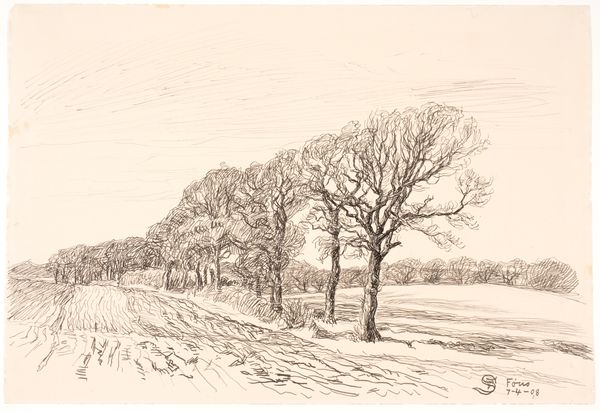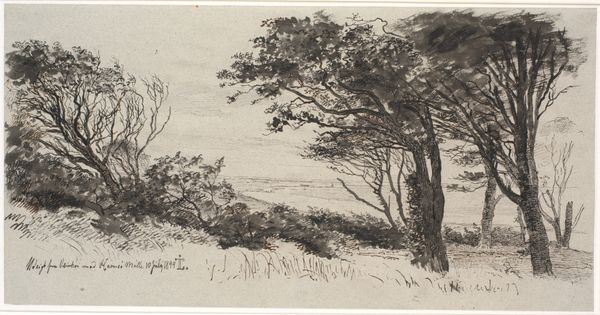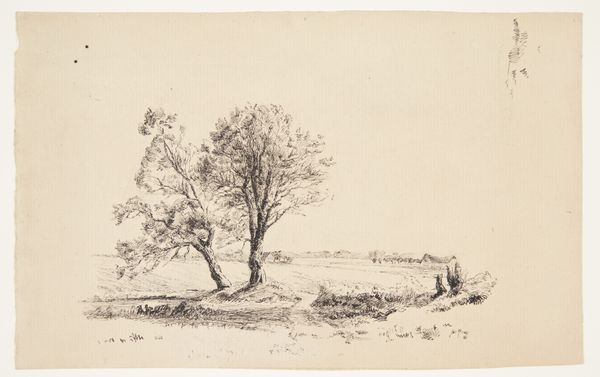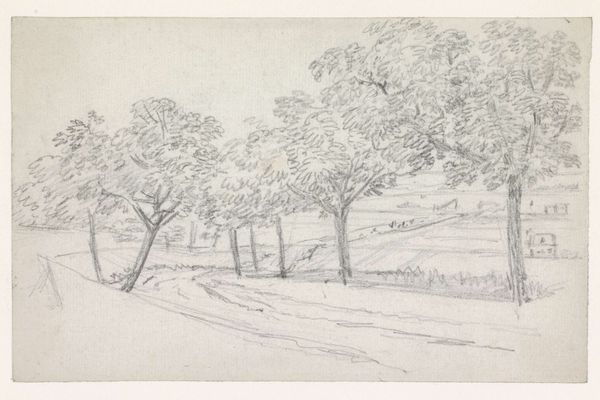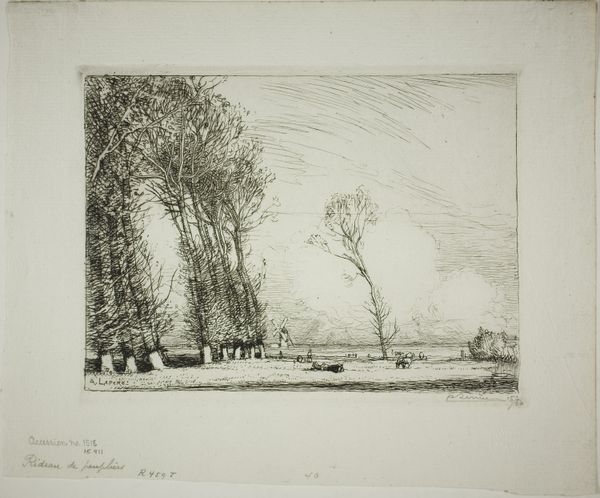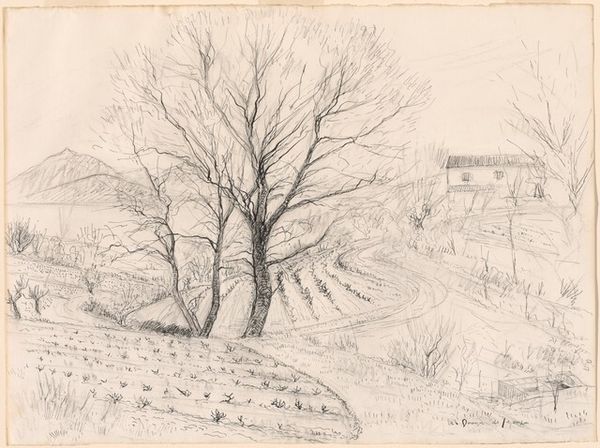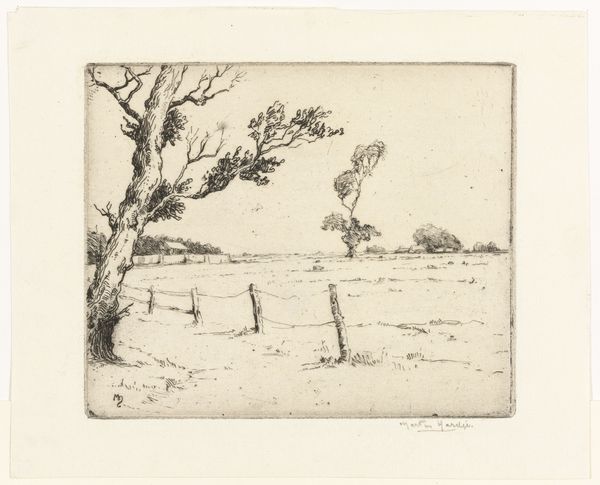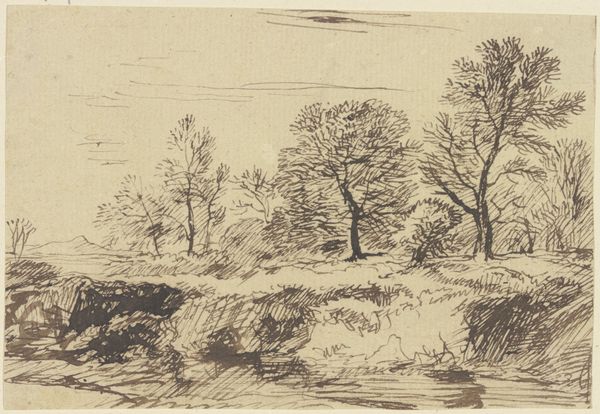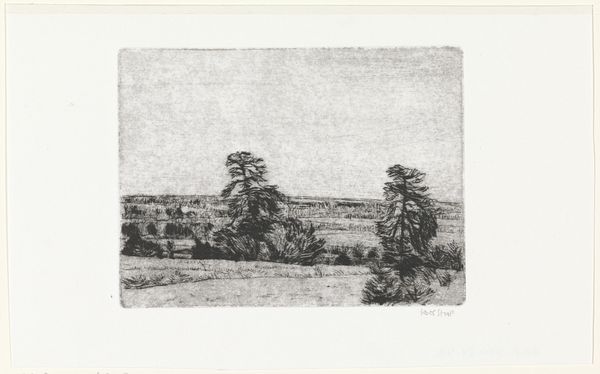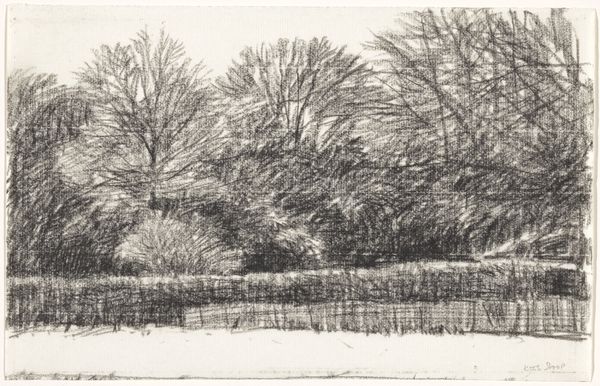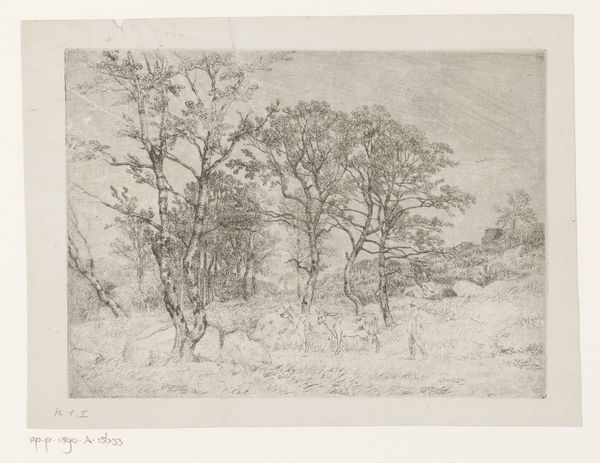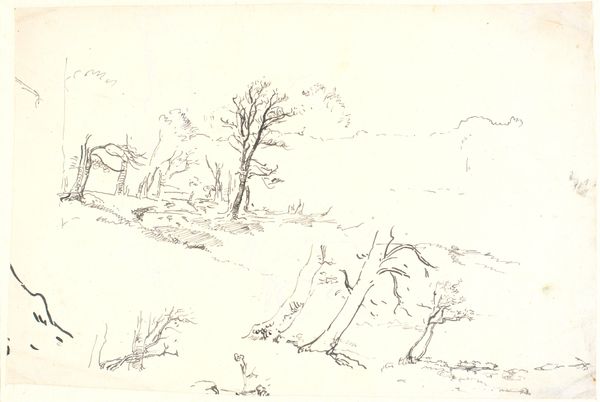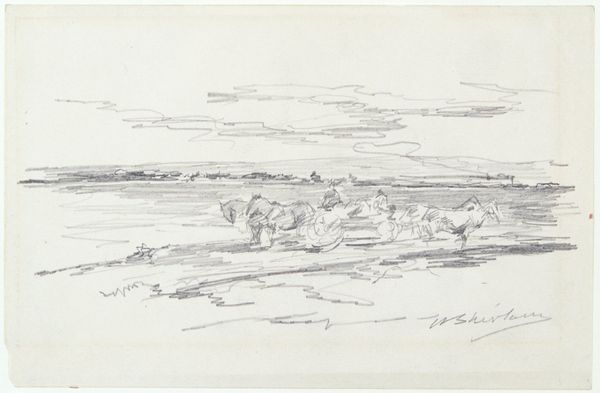
Dimensions: 172 mm (height) x 308 mm (width) (bladmaal)
Editor: This is Johanne Krebs’ “Landskab Breininggaard,” made around 1900. It’s an ink drawing, and I'm really struck by the bare trees – they seem to be reaching, almost yearning, in a way that makes the landscape feel very exposed. What stands out to you in this piece? Curator: The most evocative symbol to me is how the trees are bent by the wind. Trees, throughout cultures, signify strength, rootedness, connection to earth, and the heavens, a point of contact with the sacred. Yet here, their shapes show resistance, and speak to enduring hardship, their permanent, stoic stance against unrelenting forces of nature. The emotional impact of seeing this specific shaping, can evoke within us feelings of empathy, resonating deeply within our personal understanding of perseverance and adaptation. Editor: That's a compelling idea, about perseverance. How would you connect it to the historical context? Curator: Considering it was created around 1900, at the cusp of modernity, the bending trees become even more profound. It represents the human spirit in times of rapid change; consider also how the Romantic period influences our desire to connect emotionally with the natural landscape and imbue elements within them with emotive qualities. The bending can symbolize the challenges that individuals and societies faced, adapting to new technologies, political shifts, and evolving social norms, all forces changing and impacting how we ‘grow’. Can you also sense a spiritual grounding or personal history that the artist transmits in their artistic interpretation? Editor: Yes, now that you mention it, there’s a kind of quietness, almost a melancholy, in the landscape, a feeling that history is imprinted there. What do you think people today might take away from an image like this? Curator: Perhaps the endurance in the face of adversity, and also the importance of recognizing continuity between then and now. It is so important that our culture reflects, records, remembers, and shares to newer generations that although difficult, there is growth and transformation ahead, should we continue with fortitude and understanding, rooted in shared histories. Editor: That's given me a new way to look at the drawing. Thanks!
Comments
No comments
Be the first to comment and join the conversation on the ultimate creative platform.
